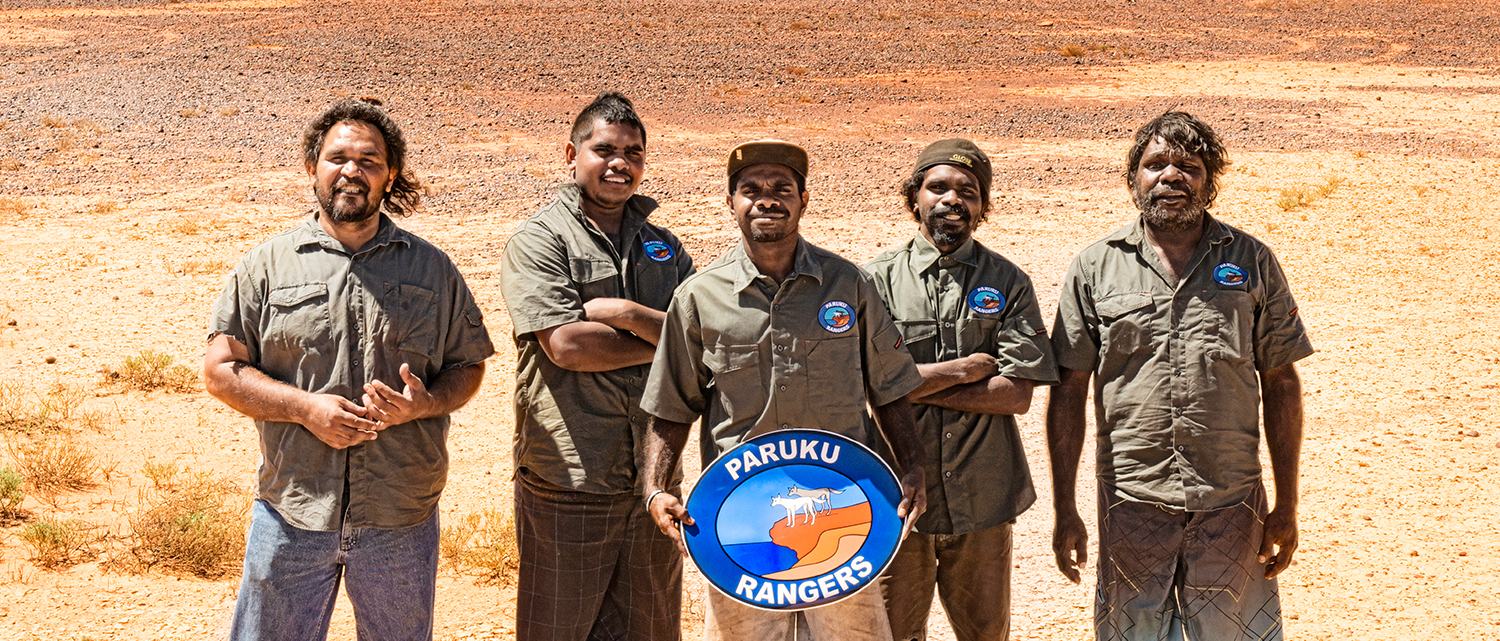
Indigenous Protected Areas
Indigenous Protected Areas (IPAs) are areas of land and sea that traditional owners have agreed to manage for biodiversity conservation.
Launched in 1997, the IPA program supports First Nations peoples to care for their Country through voluntary agreements with the Australian Government.
The program includes:
91 - dedicated IPAs managed by First Nations people
104 - million hectares of land covered by the IPAs
6 - million hectares of sea covered by the IPAs
In the Kimberley, there are eleven Indigenous Protected Areas, of which four link together to create the largest Indigenous-owned conservation corridor in northern Australia.
Kimberley IPAs now roughly cover more than 13 million hectares – almost a third of the total area of the Kimberley.
Indigenous Protected Areas are the preferred land management model in the Kimberley and cover more than 100,000 square kms. This model is supported by the Australian Government and provides a formal structure for recognising Indigenous rights to manage country while promoting biodiversity and conservation outcomes through the National Reserve System.
Establishing Indigenous Protected Areas requires Aboriginal communities to develop long-term Healthy Country Plans of management that set out the environmental targets they want to achieve while managing threats to biodiversity health.
Indigenous ranger groups work to implement the aims and objectives of management plans under the guidance of their cultural advisers who set and review work plans and progress reports.
Indigenous Protected Areas provide a feasible and effective way to maintain the ecological integrity of country while fulfilling the need to develop cultural economic enterprises. Some native title groups are using their Indigenous Protected Areas to develop tourism businesses and immersion experiences, undertake environmental management and research contracts and fire management projects.
The IPA engagement and management model promotes Indigenous leadership and provides the right match between cultural obligations and environmental responsibilities. The success of the Indigenous Protected Area program can be directly linked to the recognition of Indigenous rights to and management of traditional country.
Kimberley Indigenous Protected Areas
Paruku Indigenous Protected Area
The Paruku IPA was declared in September 2001 and covers 4300 sq km within the Tjurabalan native title area which borders the Great Sandy Desert and Tanami Desert regions of the south Kimberley.
Uunguu Indigenous Protected Area
Stage one of the Uunguu IPA was declared on May 23, 2011 across 3435 sq km of country in the far north Kimberley. The Uunguu Indigenous Protected Area is a seperate entity to the KLC.
Dambimangari Indigenous Protected Area
The Dambimangari Indigenous Protected Area spans 14,000 sqkm of country in the Buccaneer Archipelago. The Dambimangari Indigenous Protected Area is a separate entity to the KLC.
Balanggarra Indigenous Protected Area
The Balanggarra Indigenous Protected Areas was declared on August 7, 2013 across 10,000 sq km of country in the remote far north Kimberley.
Warlu Jilajaa Jumu Indigenous Protected Area
The Warlu Jilajaa Jumu IPA was declared on November 9, 2007 and covers a 16,430 sq km area in the Great Sandy Desert, in the north eastern section of Ngurrara country.
Bardi Jawi Indigenous Protected Area
The Bardi Jawi IPA was declared on May 23, 2013 and covers 950 sq km of land and sea country on the Dampier Peninsula. Bardi is from the mainland and Jawi is from Iwany (Sunday Island).
Wilinggin Indigenous Protected Area
The Wilinggin Indigenous Protected Area was declared on June 11, 2013 across a 24,174 sq km area along the iconic Gibb River Road in the central north Kimberley.
Karajarri Indigenous Protected Area
The Karajarri IPA was declared on May 7, 2014 across 24,797 sq km of country in the southern Kimberley.
Yawuru Indigenous Protected Area
The first stage of the Yawuru IPA was declared in February 2017 over 1,279 square kilometres of Yawuru country.
The IPA includes parts of the Yawuru Conservation Estate comprising Nagulagun Roebuck Bay Marine Park and the Birragun Coastal Conservation Park. The IPA also includes cultural heritage value areas within the Roebuck Plains cattle station.
Nyul nyul Indigenous Protected Area
The Nyul Nyul IPA was declared on the 10 October 2024. The area spans 144,493 hectares. The IPA protects culturally and ecologically rich land and sea Country, including freshwater springs, monsoon vine thickets, threatened species, and sea country. It also reinforces Aboriginal-led conservation and land management in the region.
Mayala Indigenous Protected Area
The Mayala IPA was declared on 20 November 2024. Mayala, is made up of hundreds of islands in the Buccaneer Archipelago. The IPA covers 12,000 hectares of land and 360,000 hectares of sea Country. The pristine ecosystem is home to narbalek, rock wallabies, turtles, dugongs and whales. The Mayala Inninalang Aboriginal Corporation IPA management plan utilises traditional knowledge and culture to protect the land's biodiversity.








